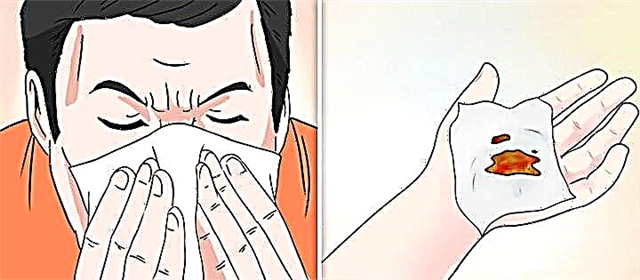Blood pressure allows blood to circulate non-stop. It gets into all tissues and saturates them with useful substances. This process is called blood circulation. The pressure is determined using a tonometer. You can use it yourself if you study the instructions. However, before the procedure, you need to find out in what units blood pressure is measured.
Pressure indicators depend on the volume of blood that the heart can pump and the degree of resistance of the vascular walls. Its lowest level is in the right  atrium, and the highest - in the left ventricle. The upper edge is determined by the blood pressure ejected by the heart during contraction. This indicator is called systolic. The lower limit can be measured when the heart is completely relaxed. In this case, we are talking about diastolic pressure.
atrium, and the highest - in the left ventricle. The upper edge is determined by the blood pressure ejected by the heart during contraction. This indicator is called systolic. The lower limit can be measured when the heart is completely relaxed. In this case, we are talking about diastolic pressure.
At first, it is difficult to understand what the numbers mean when measuring blood pressure. For a speedy adaptation, you need to decipher them. Blood pressure indicators are measured in millimeters of mercury. They got their name from the mercury tonometers. Previously, they were used to determine blood pressure, so such units of measurement were introduced. Despite the creation of new high-precision instruments, their significance was left even for electronic versions.
In Russia and many other countries of the former USSR, blood pressure is measured in mm Hg. Art. However, in some European countries, the definition system is slightly different. To understand what their pressure is measured in, you need to divide the result by 10. This is due to the fact that it is customary for them to take into account see RT. Art.
Pressure fluctuation
Studies have shown that the magnitude of pressure is not constant. It is exposed to vibrations that have been called Mayer waves. They were discovered by the German Sigmund Mayer at the end of the 19th century. Based on the results of research, the scientist concluded that a person's vibration frequency is approximately 0.1 Hz, or 5-6 times per minute. Mayer waves are also characteristic of animals, for example, rabbits and rats, but their indicators are 3-4 times higher.
It was experimentally found that pressure fluctuations are constant, and do not change depending on age, weight or gender. However, their amplitude can increase due to the activity of the sympathetic division of the autonomic nervous system. The only question that remained unresolved is the cause of the Mayer waves, but research in this direction is underway.
Indicators
In medical practice, 120/80 is considered to be the ideal pressure for people over 14 years old. However, there are situations when the indicator is slightly different from the norm, depending on individual characteristics. Some people do not feel any changes in their condition if the pressure is lowered or increased by 10-20 units. Such small deviations do not greatly affect health, but when the indicator exceeds 140/100 or falls below 100/80, then it's time to start treatment.
Depending on the indicators, the pressure is divided into the following types:
- 50/35 - 89/59 - arterial hypotension;
- 90/60 - 129/84 - allowable limit;
- 130/85 - 139/89 - prehypertensive state;
- 140/90 - 210/120 and above - arterial hypertension.
Indicators ranging from 180/110 to 210/120 and above are equated to a hypertensive crisis. When it occurs, the patient needs to be urgently hospitalized in order to avoid the consequences, for example, a heart attack or stroke.
Indicators in children
 Depending on the age of a person, his indicators may be different. In babies under one year old, normal blood pressure is calculated using the formula 76 + 2 * n. Instead of "n", you need to substitute the month of the child. The lower pressure reading should remain at 2/3 of the upper pressure.
Depending on the age of a person, his indicators may be different. In babies under one year old, normal blood pressure is calculated using the formula 76 + 2 * n. Instead of "n", you need to substitute the month of the child. The lower pressure reading should remain at 2/3 of the upper pressure.
For an adult kid, the calculation is carried out according to the same formula, but now the number of years is inserted instead of "n", and 76 changes to 90. For example, if the child is 5 years old, then:
90+2*5=100
We get the upper indicator, the lower one is approximately 2/3, which means the final pressure is 100/66 mm Hg. Slight differences in the final results between girls and boys are acceptable, but no more than 5-10 mm. Art.
Values in adults
In adolescents from the age of 14, the pressure becomes normal, that is, 120/80. Gradually, bad habits, overexertion, stress and illness have an effect on the cardiovascular system. That is why there is a legal limit up to 139/89. When it comes to older people, the upper figure may be slightly higher - up to 145-147. The bottom usually does not actually change.
Definition
Measure the pressure using a tonometer, which can be mechanical or electronic. The second type of device is divided into automatic and semi-automatic. The advantage of an electronic tonometer is that some models can additionally determine the degree of arrhythmia and heart rate.
The Korotkov method is used to measure blood pressure with a mechanical tonometer. Its essence lies in supplying air to the cuff using a pear and listening to the pulse with a stethoscope. The first heartbeat represents the high blood pressure, and the last is the low.
Semi-automatic electronic blood pressure monitors can be used to measure blood pressure without a stethoscope. Usually, with the help of a pear, air is pumped into the cuff until a beep is heard. Further, the device lowers it, determining the pressure indicator. The final result is shown on the display.
Fully automatic instruments do not require manual air inflation. Blood pressure is measured by them after pressing a button on the screen. The process lasts about 30 seconds.
A novelty in the field of pressure measurement devices is the implant placed in the pulmonary artery. It does not exceed the size of 1 coin and allows you to constantly monitor the pressure level and send a signal to the computer.
Regardless of the type of device for determination, all results are displayed in mm Hg. It is necessary to carry out the procedure for people using antihypertensive medications in the morning and in the evening. During the day, measurements are taken only when necessary. For more accurate results, you need to measure the pressure on both limbs.
Impact of extraneous factors on the bottom line
To obtain accurate indicators, you need to take into account many factors, namely:
- The time when the blood pressure was measured.
- Psycho-emotional state of a person during the procedure.
- The use of hypertensive or antihypertensive medications.
- Abuse of bad habits (smoking, taking alcohol and drugs).
- Drinking strong coffee or tea.
Some suspicious people suffer from white coat syndrome. They are completely healthy and, if there are no medical staff nearby, then blood pressure remains within normal limits. The situation changes dramatically if the measurement is made by a doctor. The pressure rises sharply, but usually not higher than 140 per 100 mm Hg. Art.
The course of therapy for such people is usually not prescribed, since they have no pathological abnormalities. The only thing a specialist can do is to have a conversation. In a conversation, he will talk about the dangers of sudden surges in pressure, and also advise you to use sedatives and stop being nervous. In some cases, it is advisable to help a psychotherapist.
To accurately determine blood pressure, it is important to understand in what units it is measured. The historical facts described above can help with this. After familiarizing yourself with them, it will be much easier to take measurements, especially if you first study the permissible age limits.



